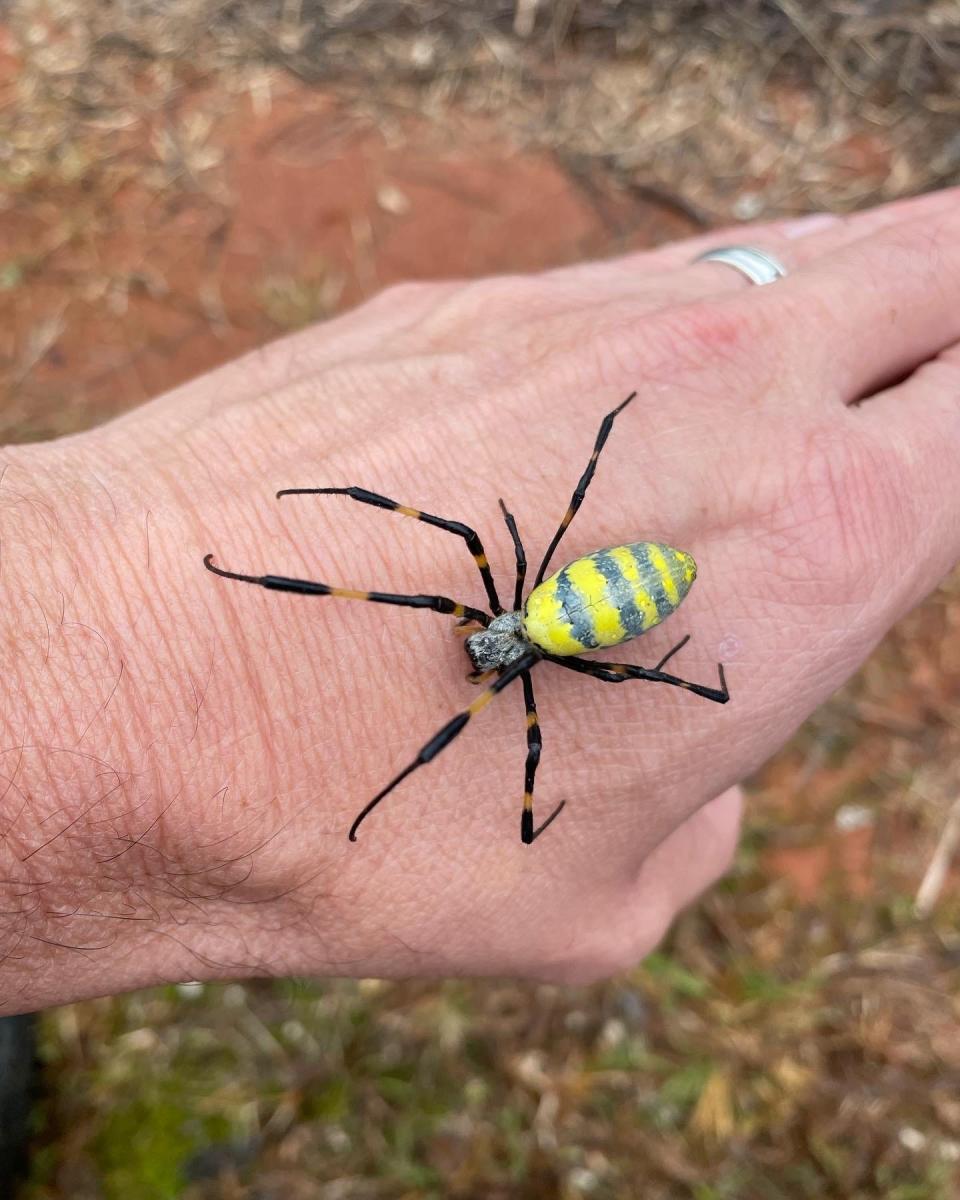Meet the Joro spider, an invasive spider that is on its way to New Jersey
If you are already wary of the many spiders we have in New Jersey, watch out, because there is another one coming our way.
Thought to have first arrived in the United States around 2010, the Joro spider is natively found in East Asia. Over the years there have been sightings in various states including Georgia, South Carolina, North Carolina and Tennessee. As of October 2022, there were also reported sightings of the spider in Alabama, Maryland, Oklahoma and West Virginia according to an article from Clemson University, where entomologist Dr. David Coyle has been studying the invasive spider for about three years.
In the article, which details the findings of his peer-reviewed study, Coyle says, “Those data show that this spider is going to be able to inhabit most of the eastern U.S. It shows that their comfort area in their native ranges matches up very well with much of North America.”

When will New Jerseyans come face to face with the Joro spider?
According to Coyle, scientists have not yet pinned down a concrete pattern and cannot predict the Joro spiders' movements.
"It seems like they expand into several states a year. We have that they have spread about 436 kilometers to the Northeast, 245 kilometers to the Northwest, and just over 100 kilometers to the Southeast and Southwest. They are spreading much faster going north from their starting point of North Georgia.
"Strictly guessing, they could be in New Jersey next year for all we know," said Coyle. "The trick with a critter like this that hitchhikes is that they can be anywhere at any time and move really fast. It is really hard to predict how fast they go. On their own they appear to spread a couple hundred miles a year. However, human mediated movement could take them much farther than that."
It is speculated that they travel by way of human involvement. For example, if they crawl onto a picnic table and then that picnic table is moved, they are going to go with it. This is similar to the way they are thought to have gotten here in the first place by riding along on shipping containers.
They also do something called ballooning as after they hatch, they will put a strand of silk out that could cause them to be picked up by the wind. So, depending on where the wind is blowing and how far they go, this could also be one of the ways that they are getting around the states.
What does their arrival mean for New Jersey residents and native wildlife?
Could Joro spiders inhabit your yard ... or house?
Thankfully, Joro spiders' goal is not to come in and take over your home.
"They are an outside thing so they will be on your house, but they are not interested in going inside your house," Coyle said.
So far, there is no evidence that Joro spiders are dangerous to humans or pets. According to Coyle there are no reports of people being bitten by these spiders and it has been reported that their mandibles aren't even strong enough to puncture skin.
"Don't get me wrong they are a big nuisance, and a lot of people find big spiders scary, and I totally get that, but they do not seem to pose any imminent danger to people or pets," he said.
They will, however, be around the outside of your house. You typically will start to see them around mid-May and they will reach their full size around August causing them to be much more visible as the females can reach up to 4 inches.
As orb weaving spiders, they tend to weave their webs in circular patterns in between things such as trees or manmade structures. Their webs can get anywhere from only a few feet to 12 feet across.
NJ news What does the average New Jersey resident make a year? A breakdown of NJ jobs
Will they have any impact on native wildlife and biodiversity?
"We definitely have information that shows that when you have high populations of Joro spiders you have very low populations of native spiders of the same type. So basically, the Joro will come in and crowd all of the other stuff out creating a biodiversity loss," said Coyle.
While this is typically not a good thing, scientists are not sure yet what the exact implications of this will be down the road.
Another invasive species that New Jersey residents are quite familiar with at this point are spotted lanternflies, which have been devastating New Jersey trees and crops over the last few years.
"There are going to be people that say the Joro spiders are a good thing because they eat spotted lanternflies, but that is not accurate," Coyle said. "Spiders are indiscriminate predators that will eat whatever comes into their webs so they could just as easily eat something like a rare bumblebee. It is pure luck that they might eat another invasive species such as the spotted lanternflies."
Overall, while they are not necessarily welcomed, Joro spiders are not to be feared either. There are a lot of unknowns about how they got here, how they are moving around the United States, and the ecological impact that they will have.
One thing scientists do know is that they are on the move and, as Coyle said, "These things are here to stay." They may arrive in New Jersey at any time.
This article originally appeared on NorthJersey.com: Joro spider could be next invasive species in New Jersey
